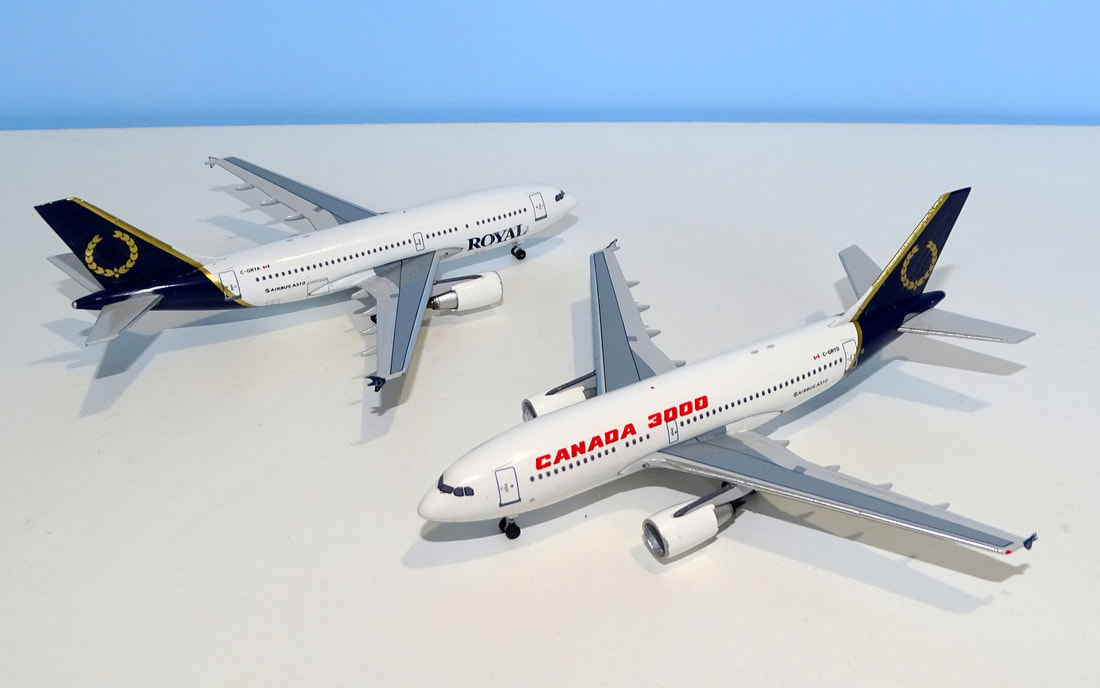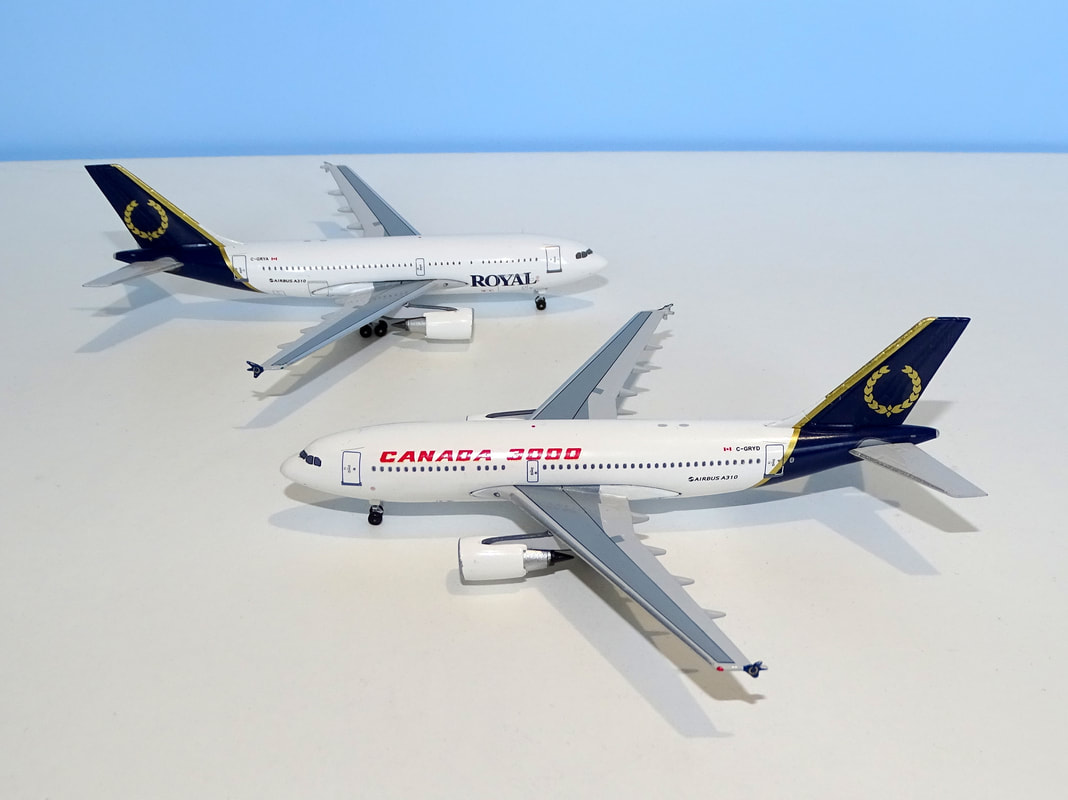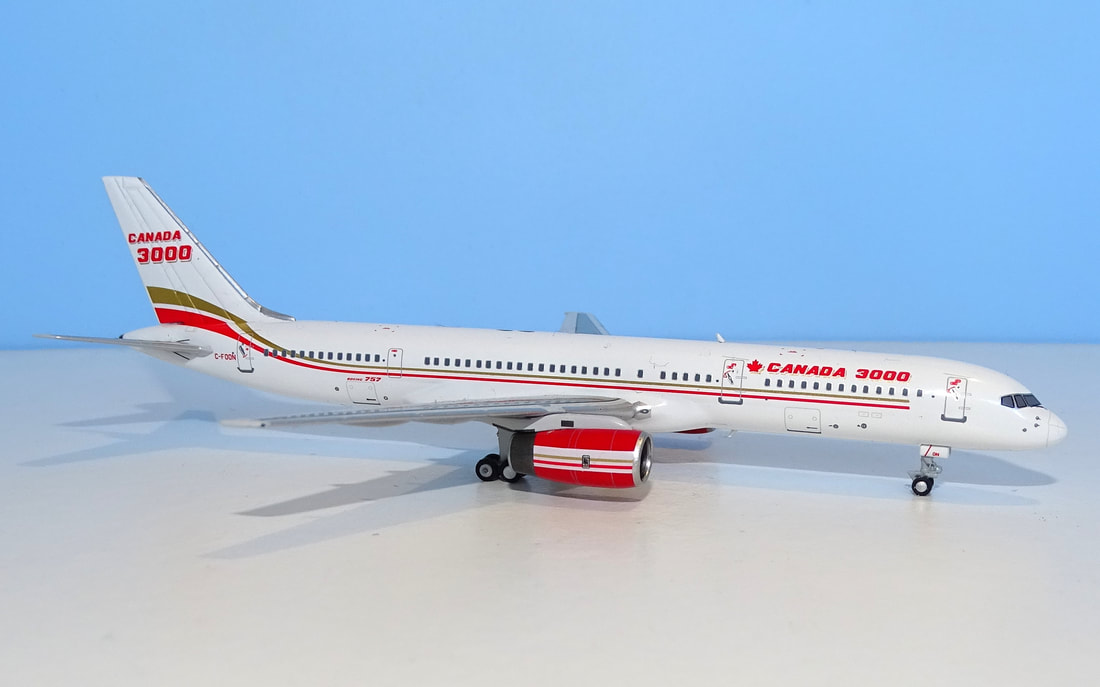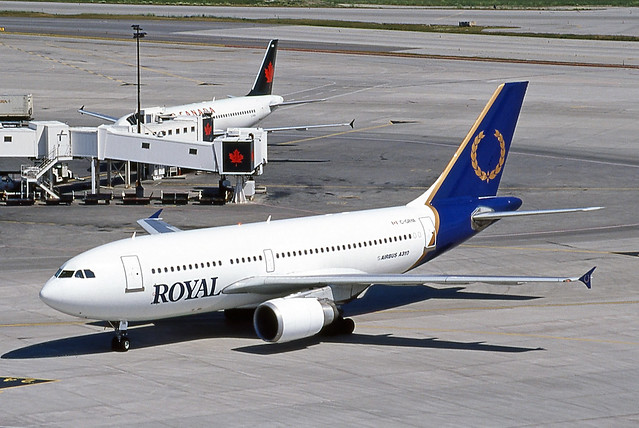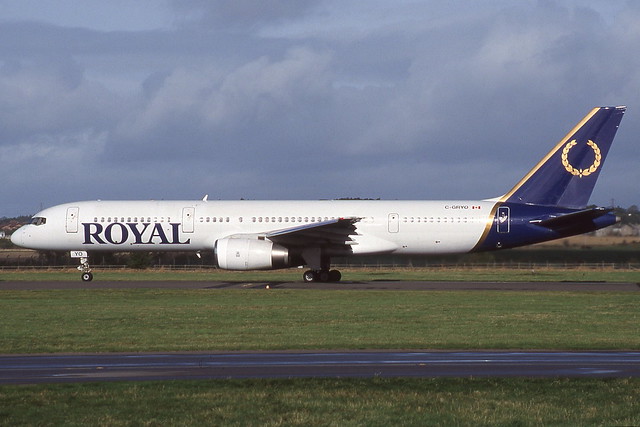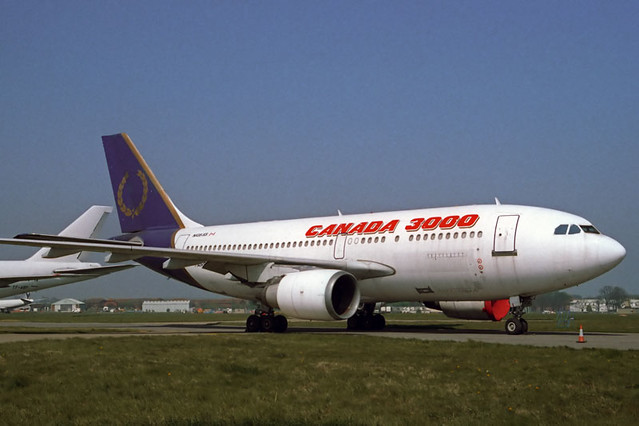Following Canadian's takeover of Wardair in 1989 Canada 3000 would quickly grow to become Canada's largest charter airline and one that was consistently profitable too. At the turn of the century the massive changes wrought by the takeover of...
Following Canadian's takeover of Wardair in 1989 Canada 3000 would quickly grow to become Canada's largest charter airline and one that was consistently profitable too. At the turn of the century the massive changes wrought by the takeover of Canadian Airlines by Air Canada appeared to open up a space for C3 to become Canada's no 2 airline and part of that strategy involved acquisitions. However, C3 would soon live to regret its purchases and desperately try to offload them as it hit the turbulence of 2001.
I have discussed Canada 300 here at the blog previously charting its rise and fall with a specific focus on its new operations between Canada and India. See that blog entry for more background:
Heading towards the year 2000 Canada 300 was strong in international markets but weak in terms of domestic flights. Canada 3000 started to look at the opportunity presented by the messy and highly political takeover of Canadian Airlines by Air Canada and saw the chance for it to become Canada's new second airline.
Given its limited domestic scheduled service C3 was keen to expand quickly and the best way to do that appeared to be by acquisition. On January 29, 2001 Canada 3000 bid for Royal Aviation to the tune of $84 million.
Canada 3000's chairman John Lecky summed up the deal as follows:
"?The combined airline represents an excellent fit and brings together Canada 3000's long-haul, international services with Royal's short-haul domestic capabilities. This will be a truly national and international airline, offering frequency, the lowest fares and broad-based excellent service"
"?The combined airline represents an excellent fit and brings together Canada 3000's long-haul, international services with Royal's short-haul domestic capabilities. This will be a truly national and international airline, offering frequency, the lowest fares and broad-based excellent service"
The chief executive of Royal Aviation, Michel Leblanc, was similarly effusive saying:
"The combined company represents an excellent platform for dynamic growth in the business market. The enhanced organization will have a fleet of 34 aircraft, with further 10 aircraft on order. The current 30 domestic city pairs served by the combined airline is expected to grow to over 40 domestic city pairs by this summer."
"The combined company represents an excellent platform for dynamic growth in the business market. The enhanced organization will have a fleet of 34 aircraft, with further 10 aircraft on order. The current 30 domestic city pairs served by the combined airline is expected to grow to over 40 domestic city pairs by this summer."
Interestingly Royal would keep its head office in Montreal and Leblanc would remain as vice-chairman. Even though Toronto based Canada 3000 had styled itself as a low fare airline the merger would see the expansion of Royal's scaled business-class product across the route network.
Leblanc owned about 45% of Royal so there was little difficulty in getting the merger approved, which was organised as a share swap - 1 Canada 3000 share for every 2.5 Royal shares. Leblance became the second largest shareholder in the merged airline after John Lecky himself.
The news of the merger was met with mixed reviews. Royal's share price rose but Canada 3000's dropped. Although some analysts saw it as a sound strategic move for Canada 3000 others saw it as throwing away the aspects that had made the carrier successful. It had reneged on statements it had made when it went public in July 2000 to not introduce business class or enter the ultra-competitive Toronto-Montreal-Ottawa triangle.
Canada 3000 was bullish about the prospects of merging the two airlines due to their relatively small size and 'fairly compatible' computer systems. Even so, their fleets were not at all compatible. Canada 3000 operated Airbus A320s, A330s and Boeing 757s. Royal Aviation operated a diverse fleet of Airbus A310s, Boeing 737-200s, 757s and Lockheed Tristars.
Canada 3000's takeover plans didn't stop with Royal and in early April a deal was announced for the takeover of CanJet Airlines for C$7 million, which included its six 737s. CanJet had been struggling against strong competition from Air Canada. The C3 President Angus Kinnear stated at the time:
"The acquisition of CanJet's 737 fleet fits well with the aircraft acquired when Royal came into our family. We can now set up a schedule from coast to coat and penetrate most medium-sized communities in Canada. It allows us to reach a position that we wouldn't have on our own for at least another two years. I'm glad of what we have achieved in such a short time."?
"The acquisition of CanJet's 737 fleet fits well with the aircraft acquired when Royal came into our family. We can now set up a schedule from coast to coat and penetrate most medium-sized communities in Canada. It allows us to reach a position that we wouldn't have on our own for at least another two years. I'm glad of what we have achieved in such a short time."?
Under the surface things were not as rosy as they seemed. There were major disagreements between Leblanc and the Canada 3000 management, which ultimately led to him being fired in June 2001. Two months later Canada 3000 filed a lawsuit against Leblanc, and the ex-Royal CFO Roland Blais, for $45 million. They alleged that the pair overstated Royal's profits and profit projections by $20.2 million to drive up the purchase price.
Lecky stated:
"While the prospects for Canada 3000 remain positive, this matter will negatively impact our short-term results. We have made considerable progress in integrating Royal's operations with those of Canada 3000 and CanJet, but we are disappointed with some of the issues we were forced to deal with when we formally took over Royal."
"While the prospects for Canada 3000 remain positive, this matter will negatively impact our short-term results. We have made considerable progress in integrating Royal's operations with those of Canada 3000 and CanJet, but we are disappointed with some of the issues we were forced to deal with when we formally took over Royal."
In September the pair of accused Royal executives counter-sued Canada 3000 for $30 million in damages.
By July Canada 3000 was already struggling for liquidity but it appeared that it would pull through but, of course the September 11 attacks led to massive economic problems for airlines and air travel in general. Suddenly all bets were off. C3 was already facing stiff competition from Air Canada's new low-cost Tango subsidiary that was launched on October 1st with the Royal problems and a worsening economy the 9-11 attacks were the last thing it needed.
Below: Of Royal's 4 A310s only 1, C-GRYV, would gain full Canada 3000 colours.
Canada 3000 gained a $75 million loan guarantee from the Canadian government but part of the terms included cutting its costs by 30%. This led in early November to Canada 3000 undertaking the desperate action of petitioning the Canadian Industrial Relations Board (CIRB) to rule that Canada 3000 and Royal were not 'common employers'. In effect C3 was asking to annul the merger and the reason for this was that if it could do this it could simply shutdown the entire Royal Aviation side of the business to achieve the necessary cutbacks!
While the decision made some sense, given the lack of fleet commonality (and thus pilot commonality) and the fact that Royal's employees were paid more than Canada 3000's, it obviously was a massive shock to those Royal employees that had been working hard to merge the airlines. The desperate gamble didn't work anyway as the CIRB ruled against it saying it didn't have the jurisdiction.
Below: The ex-C-GRYV now wearing the reg N440-XS awaits the scrapman at Manston in 2002
It quickly became academic. The airline was now losing $700,000 a day. Negotiations with unions were begun but after they failed the carrier went to court to gain protection that would give it time to restructure. On November 9 the C3 President Kinnear said:
"The airline had sought creditor protection because of "delays in securing concessions" from its unions. This step allows us to continue serving the travelling public while restructuring our operations to ensure the long term viability of Canada 3000."
?Seven hours later the airline abruptly ceased operations saying:
"Canada 3000 Airlines regrets to advise that it will cease flying operations effective November 09, 2001. We are therefore unable to transport passengers to their destinations, and recommend that they seek an alternative means of travel. We very much regret this action and wish to thank our passengers for their patronage in the past."
"The airline had sought creditor protection because of "delays in securing concessions" from its unions. This step allows us to continue serving the travelling public while restructuring our operations to ensure the long term viability of Canada 3000."
?Seven hours later the airline abruptly ceased operations saying:
"Canada 3000 Airlines regrets to advise that it will cease flying operations effective November 09, 2001. We are therefore unable to transport passengers to their destinations, and recommend that they seek an alternative means of travel. We very much regret this action and wish to thank our passengers for their patronage in the past."
Below: One of the A310s languishing in storage at Manston Kent.
The collapse left over 140,000 travellers booked to fly over the next week stranded and the airline's 4,800 staff out of work. While it is partially true that Canada 3000 became a victim of the extreme circumstances of the events following the 9-11 attacks it is also true that the takeover of Royal Aviation had proven a massive mistake. Whether Royal's financials were accurate or not the costs involved in merging the airlines and staying profitable in the face of increasing competition proved overwhelming.
References
?2001, January 29. Canada 3000 bids $84 million for Royal Airlines. CBC News
2001, January 30. Canada 3000 to acquire rival Royal Aviation in all-stock deal. The Globe & Mail
2001, August 16. Canada 3000 sues former Royal Aviation execs for $45 million. CBC News
?2001, September 21. Ex-Royal executives sue Canada 3000. The Globe & Mail
2001. Did Canada 3000 Botch the Takeover of Royal?. Airliners.net
?2001, Nov 5th. The Royal Kiss-off. Flyer Talk
?2001, Nov 9. Canada 3000 grounds planes; thousands stranded. CBC News
?2001, January 29. Canada 3000 bids $84 million for Royal Airlines. CBC News
2001, January 30. Canada 3000 to acquire rival Royal Aviation in all-stock deal. The Globe & Mail
2001, August 16. Canada 3000 sues former Royal Aviation execs for $45 million. CBC News
?2001, September 21. Ex-Royal executives sue Canada 3000. The Globe & Mail
2001. Did Canada 3000 Botch the Takeover of Royal?. Airliners.net
?2001, Nov 5th. The Royal Kiss-off. Flyer Talk
?2001, Nov 9. Canada 3000 grounds planes; thousands stranded. CBC News



